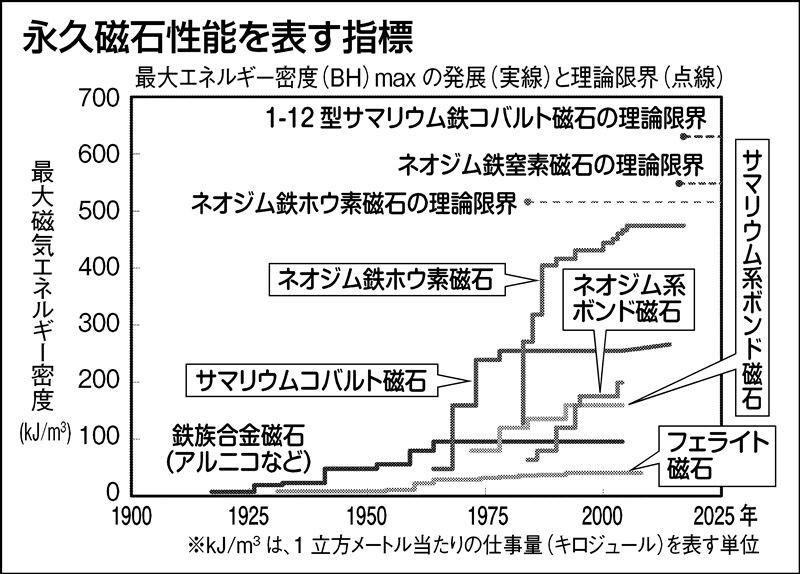"Permanent magnets" indispensable for global warming control, world-leading research now | Newswitch by Nikkan Kogyo Shimbun
Permanent magnets are gaining importance as an indispensable material for global warming control. The National Institute for Materials Science (NIMS) has achieved world-leading research results in the field of developing high-performance permanent magnets that do not use rare elements.
Permanent magnets are used as a magnetic force source for equipment that converts electricity and power, such as home appliances, information equipment, electric vehicle motors and regenerative generators, and wind power generators. Unlike a current flowing through a coil, a permanent magnet can obtain a stable magnetic force without a constant current flow, so motors and generators that make good use of magnets are more efficient and contribute to the reduction of carbon dioxide.
The sudden rise in rare earth prices due to the rare earth shock in 2011 is still fresh in our memory. In 2012, the Ministry of Education, Culture, Sports, Science and Technology's "Elements Strategy Research Center for Magnetic Materials", which was established by bringing together 15 domestic institutions (total), with NIMS as the core institution, has been developing magnetic materials to realize high-performance permanent magnets without using rare elements. By elucidating the origin of the characteristics of magnets and clarifying the theoretical limits, we have conducted a guiding principle verification of magnet development in the industrial world.
In the development of rare earth magnets, 10 years ago, information on thermodynamics, which is the basis for composition selection and process development, was scarce, leading to inefficient material development that relied on experience and intuition.

Therefore, we focused on the research field of thermodynamics, where we can calculate how much of which phase is generated at what temperature in an actual magnetic material that contains many elements at the same time. Practical calculations have become possible due to the efforts of cross-organizational experts, such as verification by synchrotron radiation X-ray diffraction.
This basic research provides a guideline for the development of rare earth magnets. In 2013, NIMS realized a neodymium magnet that does not use dysprosium, which was an urgent issue. Based on this basic research, magnets developed by magnet manufacturers are currently being installed in electric vehicles.
Furthermore, NIMS has demonstrated the existence of a substance with properties exceeding those of the neodymium-iron-boron compound that constitutes a neodymium magnet. Its pure compound (1-12 type samarium-iron-cobalt) can only be obtained as a thin film, but by adjusting its composition, it is expected that magnetic properties exceeding those of neodymium-iron-boron compounds can be obtained at high temperatures of about 100°C or higher. It has been demonstrated with alloy ingots and powders.
Practical use as a magnetic material is a future issue, but the fact that we were able to demonstrate the existence of these new materials is the result of research that pursues the theoretical limits of matter. In the future, it is expected that research on new next-generation magnetic materials will be accelerated by adopting data-driven research methods.
Nikkan Kogyo Shimbun December 15, 2021




![[EV's simple question ③] What is good for KWH, which represents the performance of the battery?What is the difference from AH?-WEB motor magazine](https://website-google-hk.oss-cn-hongkong.aliyuncs.com/drawing/article_results_9/2022/3/9/b2506c4670f9f2cb45ffa076613c6b7d_0.jpeg)
![[How cool is the 10,000 yen range?] 1st: The performance of the "robot vacuum cleaner with water wiping function (19800 yen)" like Rumba is ...](https://website-google-hk.oss-cn-hongkong.aliyuncs.com/drawing/article_results_9/2022/3/25/5251bb14105c2bfd254c68a1386b7047_0.jpeg)

